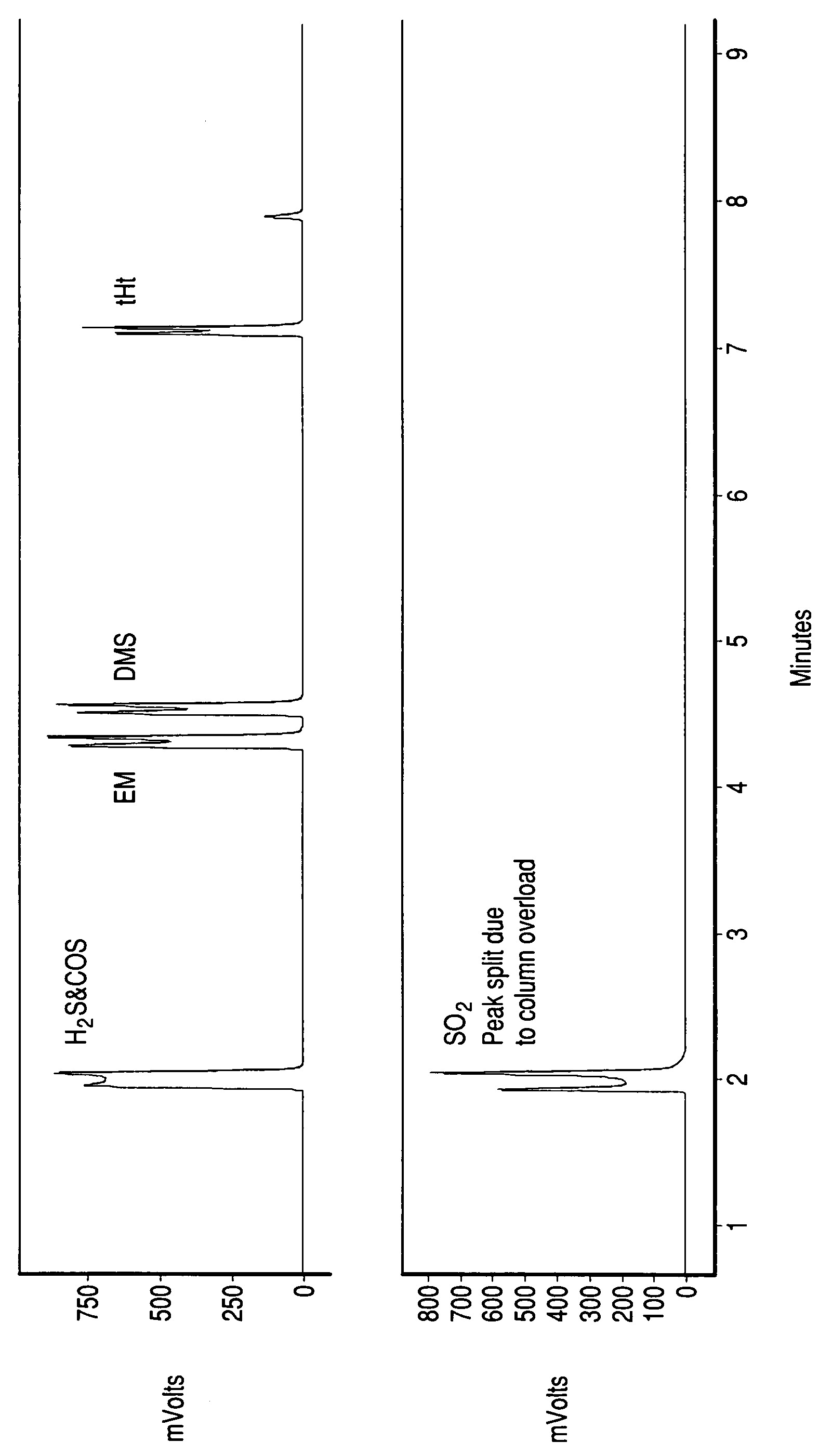Method of desulfurizing a hydrocarbon gas by selective partial oxidation and adsorption
a hydrocarbon gas and partial oxidation technology, applied in the direction of gaseous fuels, separation processes, fuel oil, etc., can solve the problems of high level of hsub>2/sub>s remaining in the treated stream, which is often too high, and can not be used as process fuel sources
- Summary
- Abstract
- Description
- Claims
- Application Information
AI Technical Summary
Problems solved by technology
Method used
Image
Examples
example 1
[0032]Gas Chromatography (GC) is used to analyze the inlet and outlet to a partial oxidation catalyst. The inlet gas contains methane and 16 ppmV each of COS, ethylmercaptan, dimethylsulfide, and tetrahydrothiophene. The catalyst is platinum supported on 20% ZrO2 impregnated SiO2 (Pt / 20% ZrO2—SiO2) catalyst (80 g / ft3 Pt). Air is added to the gas such that the O2 to carbon ratio in the feed is 0.02. The mixture of feed gas and air is passed over the catalyst at 275° inlet temperature and 20,000 / hr space velocity. The pressure is ambient (1 atmosphere). GC analysis (FIGURE) of the outlet to the catalyst shows that the organic sulfur compounds in the feed are all converted to an inorganic sulfur compound. GC-MS analysis further confirms that SO2 the only sulfur compound formed.
example 2
[0033]In this example, the same methane feed containing the same concentration of sulfur compounds as in Example 1 is provided with air at the same O2 / C ratio and treated with the same catalyst and conditions as in Example 1. A 30% Cs / alumina trap is placed downstream of the catalyst. The trap is supported on a monolith with a loading of 1 g / in3, and operated at 3000 / hr space velocity. The outlet temperature of the trap is measured at 370° C. No sulfur was observed at the outlet of the Cs trap (2 of 2.7 g S per 100 g Cs / alumina trap.
example 3
[0034]In this example, desulfurization of methane is achieved with the same oxidation catalyst as used in Example 1. 5.25 ppmV each of COS, ethylmercaptan, dimethylsulfide and tetrahydrothiophene were included in the methane feed stream. Inlet temperature, space velocity and the O2 / C ratio were the same as in Example 1. A downstream trap of 20% K / alumina having a trap capacity of 5.9 g S / 100 g trap was used to capture the oxidized sulfur species. The test was run for the first 35 hours at a space velocity for the catalyst of 20,000 / hr. For the last hour the time on stream, the catalyst was operated at 10,000 / hr. Sulfur is not detected at the exit of the trap until the trap capacity is expended after 36 hours on stream.
PUM
 Login to View More
Login to View More Abstract
Description
Claims
Application Information
 Login to View More
Login to View More - R&D
- Intellectual Property
- Life Sciences
- Materials
- Tech Scout
- Unparalleled Data Quality
- Higher Quality Content
- 60% Fewer Hallucinations
Browse by: Latest US Patents, China's latest patents, Technical Efficacy Thesaurus, Application Domain, Technology Topic, Popular Technical Reports.
© 2025 PatSnap. All rights reserved.Legal|Privacy policy|Modern Slavery Act Transparency Statement|Sitemap|About US| Contact US: help@patsnap.com

